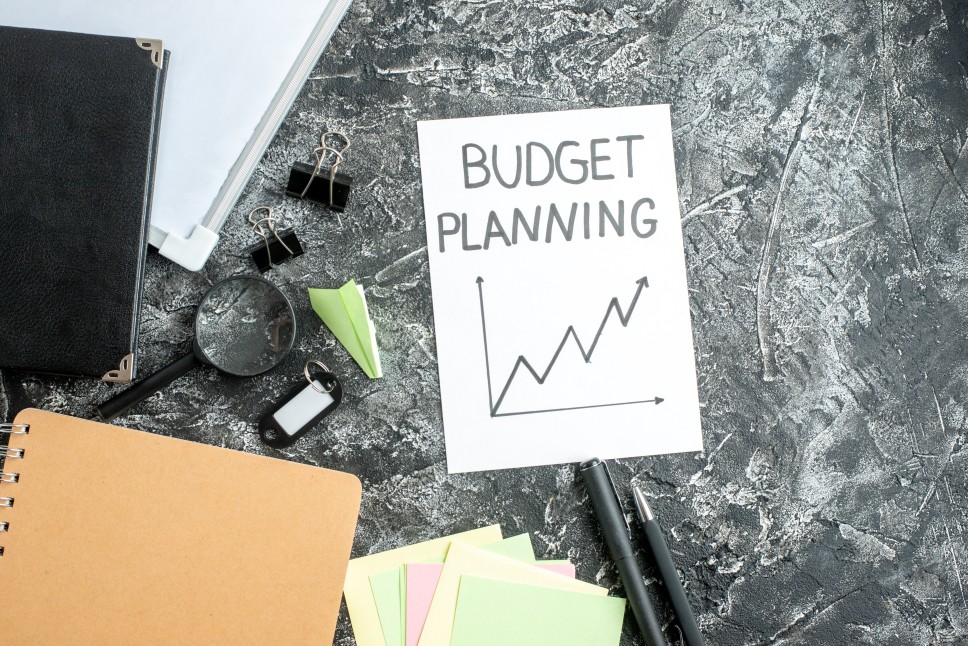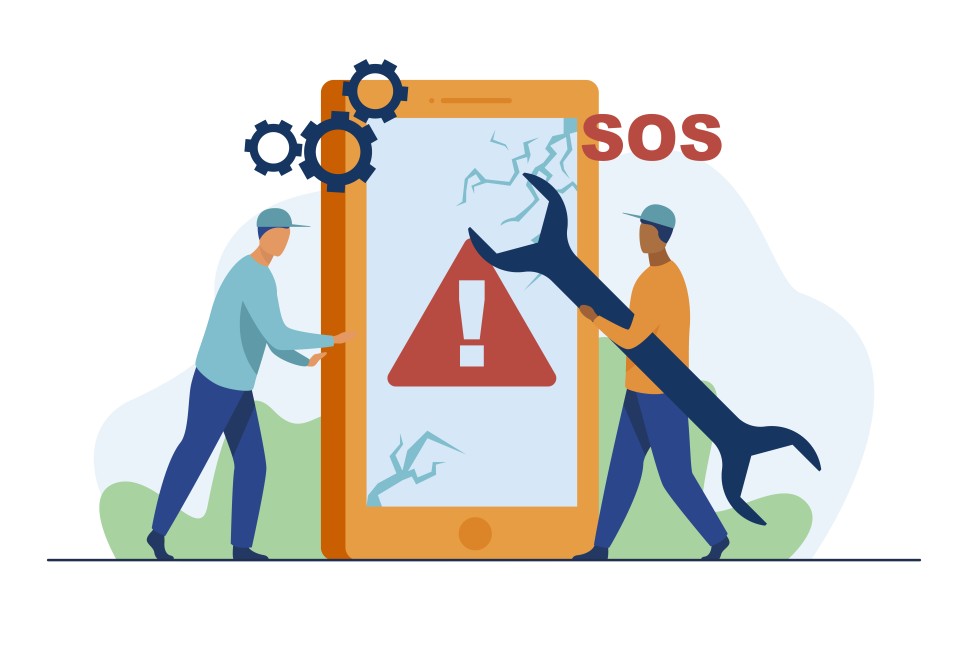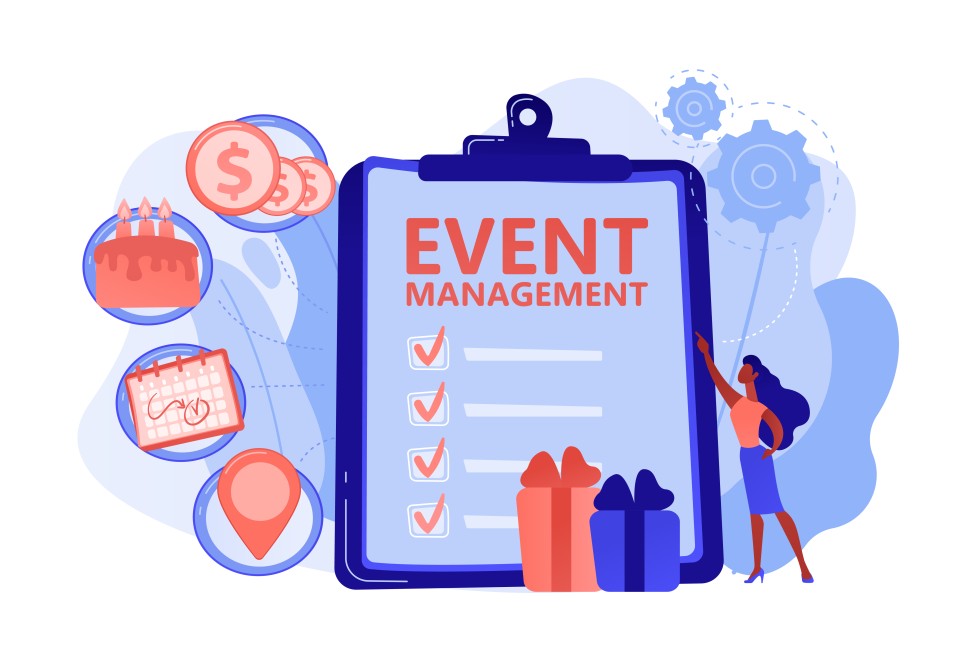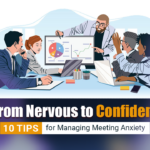
Planning and organizing an event can be an exciting experience, but it also brings a host of event-planning problems and solutions. From complicated logistics to unforeseen difficulties, every event brings a series of hurdles that need skillful problem-solving.
But fear not; in this article, we’ll introduce you to the top 17 event planning problems and solutions and provide valuable insights and strategies to overcome these challenges like a seasoned pro. This article will equip you with the knowledge and techniques to turn any event planning obstacle into a springboard for a flawless and memorable occasion.
Let’s dive into the world of event planning and equip ourselves with the tools to orchestrate seamless and unforgettable occasions.
17 Common Event Planning Problems and Solutions for Planners
Event planning can be a complex and challenging task, with various obstacles that can arise along the way. Here are 17 common event planning problems and practical solutions to help planners overcome these challenges-
1. Budget constraints
Budget constraints are a significant challenge that event planners often encounter. Limited funds may restrict the scope of the event and hinder the ability to deliver a memorable and successful experience for attendees.

Solution:
A. Research cost-effective alternatives:
- Thoroughly research various vendors, venues, and service providers to find cost-effective options that still meet the event’s requirements and standards.
- Look for vendors who offer competitive prices without compromising on quality. This applies to catering, audiovisual equipment, decorations, and more.
- Negotiate with suppliers to secure better deals or discounts, especially if you plan to establish a long-term relationship with them for future events.
B. Prioritize essential elements and trim unnecessary expenses:
- Identify the key aspects crucial to the event’s success and allocate a significant part of the budget to these areas. For example, focus on excellent entertainment and engaging activities for a community festival.
- Eliminate or reduce unnecessary elements that don’t significantly contribute to the event’s goals or attendee experience. For instance, opt for simpler decor options that do not significantly impact the event’s atmosphere.
- Consider leveraging sponsorships or partnerships with businesses or organizations willing to invest in specific event aspects in exchange for brand exposure.
2. Venue availability
Venue availability is a critical issue in event planning, as popular venues tend to get booked quickly, especially during peak seasons. Failure to secure a suitable venue can disrupt the event planning timeline and may force organizers to compromise on their preferred location or date.
Solution:
A. Start early and book in advance
- As soon as you decide on the event’s date and approximate size, search for suitable venues. Early planning gives you a better chance of securing your preferred location before it gets booked by other events.
- Many venues offer discounts or other incentives for early bookings, making securing the venue well in advance financially beneficial.
B. Consider flexible dates or alternative venues:
- If your first-choice venue is unavailable on the desired date, consider being flexible with the event date. Weekends are often in high demand, so consider weekdays or less popular time slots.
- Explore alternative venues that may not be your initial preference but can still meet the event’s requirements. These could include community centers, parks, or unconventional event spaces that are readily available and cost-effective.
C. Communicate with the venue:
- Establish open communication with the chosen venue and inform them about the importance of your event. They may be willing to accommodate your event or suggest other suitable dates that align with their availability.
3. Vendor management
Vendor management is a crucial aspect of event planning, as the success of an event heavily relies on the quality and reliability of the various vendors involved. Poor vendor management can lead to miscommunications, delays, and subpar services, ultimately affecting the overall event experience.

Solution:
A. Communicate expectations clearly:
- Communicate your event’s requirements, expectations, and specific deliverables to each vendor from the outset. This ensures that everyone is on the same page and understands their roles and responsibilities.
- Put everything in writing through detailed contracts or agreements to avoid misunderstandings or disputes later.
B. Maintain good relationships for future collaborations:
- Build a positive and professional relationship with your vendors. Treat them with respect and appreciation for their services.
- Recognize and acknowledge the vendors’ efforts during and after the event. A simple thank-you note or token of appreciation can foster strong relationships.
- Nurturing positive relationships creates the potential for future collaborations. This leads to better deals, increased reliability, and a smoother planning process for future events.
4. Last-minute changes
Last-minute changes are expected in event planning and can disrupt the carefully laid-out plans. Event planners must be prepared to effectively handle these unexpected situations, whether they involve sudden weather changes, speaker cancellations, or unforeseen logistical issues.
Solution:
A. Have contingency plans ready:
- Anticipate potential challenges and develop backup plans for each aspect of the event. This includes backup venues, alternative activities, and contingency schedules.
- Ensure that your team is aware of these contingency plans so they can quickly implement them if needed.
B. Stay flexible and adapt quickly:
- Embrace a flexible mindset and be prepared to adjust plans on the fly. Event planning often requires quick thinking and adaptation to changing circumstances.
- Keep communication lines open with all stakeholders, including vendors and team members, so that everyone is informed promptly about any changes.
5. Time management
Time management is a critical aspect of event planning. Inadequate time management can lead to missed deadlines, rushed preparations, and a disorganized event.

Solution:
A. Create a detailed timeline and stick to it:
- Begin planning early. Establish a comprehensive timeline that outlines all the essential tasks leading up to the event.
- Break down the timeline into smaller milestones and set deadlines for each task. This will help you track progress and ensure that everything stays on schedule.
- Utilize event management software or project management tools to keep track of tasks, deadlines, and team progress.
B. Delegate tasks to a reliable team:
- Identify capable team members and delegate specific tasks based on their strengths and expertise.
- Clearly communicate the responsibilities and expectations to each team member. Ensure they have the resources they need to complete their tasks successfully.
- Regularly check in with team members to provide support, address issues, and monitor progress.
C. Allocate buffer time:
- Factor in buffer time in your timeline to account for unforeseen delays or emergencies.
- Be realistic in your planning, and avoid overloading the schedule with too many tasks in a short timeframe.
6. Catering challenges
Catering challenges are common in event planning. Providing delicious and appropriate meals for attendees can be complex, especially when dealing with various dietary preferences and restrictions.
Solution:
A. Confirm dietary requirements in advance
- Send out dietary preference forms and event invitations to gather information on attendees’ dietary restrictions and preferences.
- Collaborate closely with the caterer to ensure they know all dietary requirements and can plan their menu accordingly.
B. Arrange a tasting session with the caterer:
- Before finalizing the menu, schedule a tasting session with the caterer to sample the dishes they plan to serve at the event.
- This tasting session allows you to assess the food’s quality, presentation, and suitability for the event theme.
C. Allocate sufficient budget for catering:
- Adequately budget for catering to ensure you can provide quality meals that meet attendees’ expectations.
- Remember that catering is a crucial aspect of the event experience and should be protected due to budget constraints.
7. Technical difficulties
Technical difficulties can cause significant disruptions during events, leading to delays, malfunctions, and a negative impact on the overall attendee experience.

Solution:
A. Conduct a rehearsal or run-through:
- Before the event, hold a comprehensive rehearsal or run-through with all technical aspects to identify and resolve potential issues.
- This practice session also allows the technical team to familiarize themselves with the event’s flow and requirements.
B. Have technical support on standby:
- Employ experienced technical staff or hire a professional technical team to handle any technical challenges that may arise during the event.
- Ensure that the technical support team is familiar with the event’s equipment and setup.
C. Develop a backup plan:
- Have a contingency plan in place in case of major technical failures. This plan should include readily available spare equipment, backup power sources, and alternative solutions.
- Ensure the technical team is aware of the backup plan and ready to implement it if necessary.
8. Weather uncertainties
Weather uncertainties can pose significant challenges for outdoor events, as unexpected weather changes can impact event logistics, attendee comfort, and overall event experience.
Solution:
A. Plan for indoor and outdoor options:
- Design the event layout to allow for flexibility, with both indoor and outdoor spaces available.
- Have a backup plan for outdoor activities or sessions in case of adverse weather conditions. This could involve arranging for indoor spaces, tents, or covered areas.
B. Monitor weather forecasts:
- Follow weather forecasts closely leading up to the event. Be prepared to adjust based on the predicted weather conditions.
- Establish a communication plan to inform attendees of any changes or updates related to the event schedule due to weather.
C. Provide weather-appropriate amenities
- If the event is outdoors, consider providing amenities to enhance attendees’ comfort in various weather conditions. For example:
– In hot weather: Offer shaded areas, fans, or cooling stations with refreshments.
– In cold weather: Provide heaters, blankets, or hot beverages to keep attendees warm.
– In rainy weather: Have umbrellas or rain ponchos available for attendees.
9. Guest list management
Guest list management can be challenging, especially when dealing with many attendees and tracking RSVPs effectively. Mismanagement of the guest list can lead to confusion, overcrowding, or the lack of essential event resources.

Solution:
A. Use event management software for RSVP tracking:
- Utilize event management software or online platforms that offer RSVP tracking features.
- These tools allow guests to quickly RSVP online, and they automatically update the guest list in real time, making it easier for event planners to manage attendance.
B. Send timely reminders to guests:
- Send out initial invitations well before the event to give guests ample time to respond.
- Follow up with timely reminders closer to the event date, prompting guests to RSVP if they still need to.
10. Registration and check-in issues
Registration and check-in issues can frustrate attendees and event organizers. Long queues, technical glitches, and confusion during the registration and check-in process can lead to delays and dissatisfaction among participants.
Solution:
A. Use user-friendly registration platforms:
- Choose registration platforms that are easy to navigate and offer a straightforward registration process for attendees.
- Ensure that the registration form collects all necessary information without being overly complicated or time-consuming.
B. Provide clear instructions:
- Clearly communicate the registration process to attendees through email or event websites.
- Include step-by-step instructions on how to register, what information to provide, and any relevant deadlines.
C. Offer multiple registration options:
- Provide online and in-person or on-site registration options for attendees who may prefer different methods.
- Having multiple options allows attendees to choose the most convenient way to register.
D. Test the registration process:
- Test the registration platform thoroughly before making it live to identify and resolve any technical issues or glitches.
- Ensure the registration form is mobile-friendly, as many attendees may use their smartphones to register.
E. Utilize technology for check-in:
- Use mobile check-in apps or QR code scanners to speed up the check-in process and reduce wait times.
- Using technology also allows for better tracking of attendee attendance and event metrics.
11. Insufficient promotion and attendance
Event organizers can be disheartened by insufficient promotion and low attendance. However, with effective marketing strategies, events may reach their target audience, resulting in high turnout and reduced impact.

Solution:
A. Utilize social media and email marketing:
- Promote the event using popular social media platforms such as Facebook, Instagram, Twitter, and LinkedIn. You can also check out our article, A Comprehensive Guide on How to Create a Social Media Calendar.
- Create engaging content, including event teasers, behind-the-scenes glimpses, and posts highlighting the event’s unique features. For more tips, read – A Comprehensive Guide to Making Your Event a Success.
- Send regular email updates to your mailing list, including event reminders and exciting announcements to build anticipation.
B. Collaborate with influencers or partners for outreach:
- Partner with influencers or industry leaders with a substantial following relevant to your event’s target audience. Check out more strategies with our Comprehensive Guide of Event Marketing Strategies that Guarantee Success.
- Engage these influencers to promote the event on their social media channels or through dedicated posts and stories.
- Collaborate with sponsors, exhibitors, or community organizations to co-promote the event, expanding its reach to a broader audience.
C. Offer early bird discounts or incentives:
- Encourage early registrations by offering special discounts or exclusive perks to those who sign up before a specific date.
- Limited-time offers create a sense of urgency, motivating potential attendees to register sooner.
D. Engage with the target audience:
- Interact with potential attendees on social media by promptly responding to their comments, messages, and inquiries.
- Engaging with the audience creates a positive impression and increases the likelihood of attendance.
12. Unexpected emergencies
Unexpected emergencies can occur during events, ranging from medical emergencies to accidents, severe weather, or security incidents. Without proper preparation, these emergencies can lead to chaos and potentially compromise the safety of attendees and staff.
Solution:
A. Establish emergency procedures with the team:
- Meet with the entire team before the event to discuss potential emergency scenarios and establish clear procedures for handling each situation.
- Assign specific roles and responsibilities to team members during emergencies to ensure a coordinated and efficient response.
B. Conduct drills and simulations:
- Conduct emergency drills and simulations with the event staff to practice their roles and responses in various emergency scenarios.
- These practice sessions help familiarize the team with the procedures and build confidence in handling real-life emergencies.
C. Coordinate with venue management and local authorities:
- Collaborate with the venue management to understand their emergency protocols. Accordingly, identify designated emergency exits and assembly areas.
- In emergencies requiring external support, establish communication channels with local authorities, such as the police, fire department, or medical services.
D. Train staff in first aid and emergency response:
- Ensure that a few team members are trained in first aid and CPR to provide immediate assistance.
- Having team members with basic medical training can be invaluable in managing medical emergencies until professional help arrives.
13. Lack of engagement and entertainment
Lack of event engagement and entertainment at events can lead to disinterested attendees and a less memorable experience. A dull event may fail to meet its objectives and may not leave a lasting impression on participants.

Solution:
A. Curate exciting activities and entertainment options:
- Research and select activities and entertainment that align with the event’s theme and target audience preferences.
- Offer diverse entertainment, such as live music performances, interactive shows, engaging speakers, or interactive workshops.
B. Utilize technology for interactive experiences:
- Integrate technology, such as interactive displays, augmented reality, or virtual reality experiences, to create engaging and memorable moments for attendees.
- Embrace event apps or platforms that allow attendees to participate in live polls, surveys, or contests during the event.
C. Incorporate experiential marketing:
- Engage attendees through experiential marketing techniques that involve them directly with the event’s brand or message.
- Create interactive installations, product demos, or branded experiences that leave a lasting impact on participants.
D. Provide networking opportunities:
- Facilitate networking opportunities where attendees can connect and interact with each other. Here’s a complete guide to in-person networking.
- Host ice-breaking activities or networking sessions to encourage meaningful interactions.
14. Transportation and parking challenges
Transportation and parking challenges can cause frustration and inconvenience for event attendees, primarily if the event is located in a remote area or needs more parking facilities.
Solution:
A. Arrange shuttle services for remote locations:
- If the event venue is in a remote area with limited public transportation options, consider providing shuttle services from easily accessible locations, such as nearby hotels, public transit hubs, or designated pick-up points.
- Inform attendees about the shuttle schedule and pick-up locations well in advance to ensure a smooth transportation experience.
B. Provide clear parking instructions and options:
- If on-site parking is available, provide clear and detailed parking instructions to attendees through event websites, maps, or event guides.
- Indicate parking areas clearly with appropriate signage to guide attendees upon arrival.
- Consider reserving some parking spaces for VIP guests or those with special needs.
C. Promote carpooling and ridesharing:
- Encourage attendees to carpool or use ridesharing services to reduce the number of vehicles arriving at the event.
- Offer incentives for carpooling, such as preferred parking spots or discounts on event merchandise.
15. Post-event feedback collection
Collecting post-event feedback is essential for event planners to assess their event’s success and identify areas for improvement. Learn Why Conference Feedback is Important and how to Collect it. Promptly reaching out to attendees for feedback and offering incentives can encourage a higher response rate and valuable insights.

Solution:
A. Send out surveys to attendees promptly:
- Immediately after the event or within a day or two, send out online surveys to attendees via email or event apps. Check out our list of 27 Event Survey Questions for Maximum Response.
- Keep the survey concise and straightforward, focusing on critical aspects of the event, such as content, organization, logistics, and overall satisfaction.
B. Use a mix of rating scales and open-ended questions:
- Include rating scales to collect quantitative data on attendee satisfaction with different event elements.
- Also, open-ended questions should be incorporated to allow attendees to provide more detailed feedback and suggestions.
C. Incentivize feedback form completion:
- Offer incentives to attendees for completing the feedback form, such as entry into a prize draw or a discount on future event registration.
- Make sure to communicate the incentives clearly to encourage more attendees to participate.
D. Express gratitude:
- Show appreciation to attendees who took the time to provide feedback. A thank-you email or message can go a long way in building a positive relationship with participants.
16. Conflict resolution among team members
Conflict among team members can arise during event planning, and if left unresolved, it can negatively impact team dynamics and overall event success. Effective conflict resolution strategies are crucial to maintaining a harmonious and productive working environment.
Solution:
A. Encourage open communication and feedback:
- Foster a culture of open communication within the team, where team members feel comfortable expressing their opinions, concerns, and ideas.
- Conduct regular team meetings to provide opportunities for team members to share updates, discuss challenges, and offer feedback.
B. Address conflicts promptly and professionally:
- If conflicts arise, address them promptly before they escalate further. Avoid ignoring or dismissing disputes, as they may worsen over time.
- Initiate one-on-one conversations with the team members involved in the conflict to understand their perspectives and identify the root cause of the issue.
C. Remain neutral and objective:
- As a mediator, maintain a neutral and objective stance. Avoid taking sides and focus on understanding the viewpoints of all parties involved.
- Encourage each team member to share their thoughts without fear of judgment or reprisal.
17. Evaluating event success
Evaluating an event’s success is essential to understanding its impact and identifying areas for improvement in future planning. Setting measurable goals and analyzing relevant metrics and feedback are vital components of the evaluation process.

Solution:
A. Set measurable goals before the event:
- Define clear and specific objectives for the event that can be measured objectively.
- Goals may include metrics related to attendee satisfaction, attendance numbers, revenue generation, lead generation, social media engagement, or other key performance indicators (KPIs) relevant to the event’s purpose.
B. Use technology and data collection tools:
- Use event management software or apps to track attendance, engagement, and other relevant data in real-time.
- Use event surveys and feedback forms to collect qualitative data about attendees’ event experiences.
C. Monitor KPIs during the event:
- During the event, continuously track and monitor the pre-defined KPIs to assess progress toward meeting the goals.
- Utilize live dashboards and analytics tools to gain insights into attendee behavior and engagement.
D. Analyze post-event metrics:
- After the event, analyze the data collected, such as attendance figures, revenue generated, social media interactions, and survey responses.
- Compare the actual results with the set goals to determine if the event achieved its objectives.
E. Seek feedback from stakeholders:
- Collect feedback from attendees, sponsors, exhibitors, and team members to understand their perspectives on the event’s success and areas for improvement.
- Take both positive and constructive feedback into consideration while evaluating the event.
F. Review budget and return on investment (ROI):
- Evaluate the event’s financial performance by comparing the expenses with the revenue generated.
- Calculate the ROI to determine if the event provided a satisfactory return on the investment.
G. Prepare a comprehensive post-event report:
- Compile all the data, metrics, and feedback into a comprehensive post-event report.
- Analyze the event’s success, highlighting achievements, areas for improvement, and recommendations for future events.
Remember, every event is unique, but being prepared to tackle these common challenges will help you execute successful events efficiently and professionally.
Key Takeaway
The success of an event hinges on effective planning, execution, and evaluation. Event planners can ensure seamless events by proactively addressing common challenges and implementing strategic solutions.
With each challenge overcome and every solution implemented, event planners embark on a journey of growth and expertise, ultimately delivering exceptional events that leave a lasting impact on all who attend. To learn more about delivering unforgettable event experiences, you can check out our article on the best event podcasts.
Lastly, visit our site- Eventible, to stay up-to-date with the latest information about the event industry.




Comments are closed.